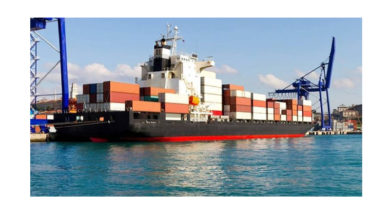Transition from offset to digital printing set to accelerate
In 2015 digital print accounted for 13.9% of all print and printed packaging in value terms, but just 2.5% of the volume. This has grown from 9.4% of the value and 1.9% of the volume in 2010. According to a new report from Smithers Pira, the offset to digital transition is accelerating: in 2020 digital will be 17.4% of value and 3.4% of all print and printed packaging volume.
According to report ‘The Future of Digital vs Offset Printing to 2020’, digital is growing because it can offer advantages that analogue print cannot provide. As colour digital presses came to market the initial drivers were for low cost, short runs and quick turnaround. As more companies used the technology, new applications and business models developed for print-on-demand and short-run books. There is increasing demand for photobooks and photo products, where digital print linked to online ordering has enabled a multi-billion dollar market to flourish.
The penetration of digital varies across particular market sectors. Advertising print and graphics have a higher proportion of digital print in the overall mix than for packaging and publishing where books are taking off and there is some newspaper inkjet printing. The varying take up is summarised in Figure 1 below. ¬
The adoption of digital is not just cost-based. While sheetfed litho shows stable pricing, there are significant drops for litho web, gravure and inkjet printing. Flexo pricing will rise as packaging products account for a larger share of the market and shorter runs are pushing the average upward.
Sheetfed litho has real productivity gains from new equipment, but the long life and active second-hand market for presses means there are many very old machines on the market. The changing product mix, with a greater proportion of more expensive packaging, evens the overall price development. Web offset litho pricing is falling, partly due to improvements from modern presses and use of lean manufacturing, but more through the impacts of competition to chase the remaining market as volumes fall. The overall impact is a slight increase in the average price of all print between 2010 and 2020, through the adoption of more valuable digital printing and a change in the work mix to more highly priced products. The unit cost of packaging is much higher than for newspapers, where many publishers supply the paper which does not contribute to the print value figures.
Digital print can incorporate variability that makes it more effective than the static alternative. Users of digital print are innovating with applications and exploring new ways to offer novel functions and features to print buyers that are valued and sell at a premium.
Smithers Pira ran a market research programme in June-July 2015 to determine the status and to identify the key drivers and barriers to the adoption of digital printing. The continuing increase in shorter run lengths was identified as the most important issue; with the improvements in technology ranked second, equal with the low setup costs; while environmental benefits scored lowest. In terms of barriers to the adoption of digital printing, the cost of individual jobs scored most highly, followed by general issues of print quality and the cost of machinery. The respondents are still seeing potential problems on certain stocks and jobs that are hampering adoption in some quarters.
Printing technology is continuing to develop for analogue processes, but the major developments are taking place in digital printing – and particularly inkjet, which is enjoying major investments in R&D on heads, inks, and printing systems. There are also significant developments in enabling workflow technology – for all processes – and in substrates, with much emphasis on paper to improve the quality of water-based inkjet printing. The developments are changing the relative cost positions of digital and analogue printing. Generally the economic crossover point is getting higher and this will fuel further adoption of digital technology, at the expense of the established litho, flexo and gravure alternatives.
Smithers Pira has developed a costing model that compares digital and offset printing. This builds up the real production costs including capital cost, depreciation period, maintenance, shift pattern, labour rates, energy, make-ready time, plate costs, setup and running waste, print speed and press utilisation, and paper and ink or click cost at variable coverages. The final product can be varied and the model calculates the comparative cost as run lengths change, to show the economic crossover where one process becomes cheaper than another. As technology and prices change, this model is a useful tool for companies to select the most appropriate technology for their particular markets. It is also useful for equipment suppliers to determine how their technology fits in to the supply market.
Digital print can mimic the output of analogue, generally at lower run lengths; but the economic crossover continues to rise, and should get a hike upward at drupa 2016. Using digital just to mimic offset or flexo print is not the best use of the technology, though. There are companies producing very high-quality, innovative products with variable content that buyers value.
Having both digital and analogue solutions means a company can offer the most appropriate solution to the customer. One successful medium-size print company explained that its litho capacity produced a lot of the volume for a particular customer in a very competitive, cost-conscious market.
It was the innovative digital solutions they provided that differentiated the company to become a valued supplier, rather than one competing on price. The digital work at high margins meant that overall the account was very profitable.
Digital printing will continue to grow in most print sectors across the world. Mono webfed electrophotography is being superseded by full-colour inkjet; but despite this drop, the volume and value of electrophotography will continue to rise as colour applications grow. Innovative users will find more applications and niches to exploit the advantages of digital – some at the expense of offset printing, but also by opening totally new opportunities.
Smithers Pira is the worldwide authority on packaging, paper and print industry supply chains. Established in 1930, Smithers Pira provides strategic and technical consulting, testing, intelligence and events to help clients gain market insights, identify opportunities, evaluate product performance and manage compliance.





